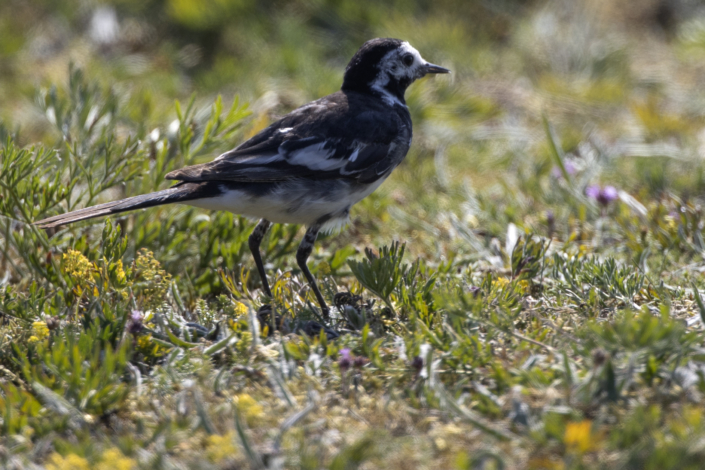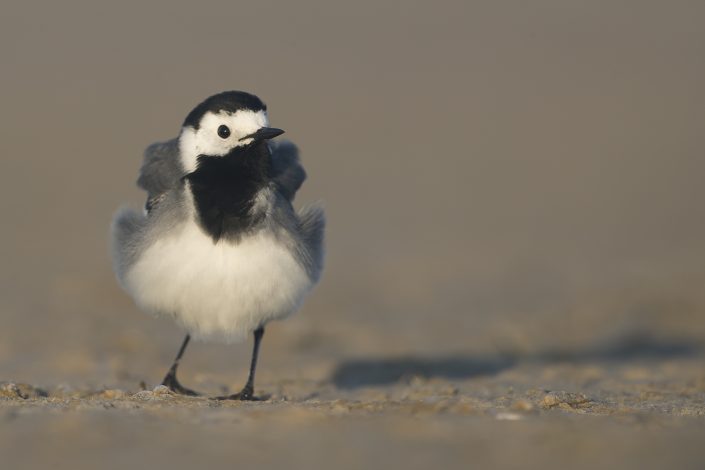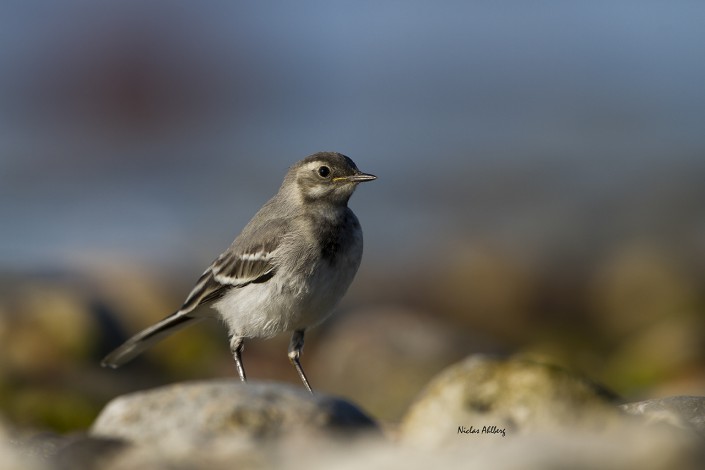This post is also available in: Swedish
White wagtail – Motacilla alba
White wagtail – Motacilla alba
is a small passerine bird in the wagtail family Motacillidae, which also includes the pipits and longclaws. This species breeds in much of Europe and Asia and parts of north Africa. It is resident in the mildest parts of its range, but otherwise migrates to Africa. It has a toehold in Alaska as a scarce breeder. In the British Isles the darker sub-species the pied wagtail (M. a. yarrellii) predominates. The white wagtail is an insectivorous bird of open country, often near habitation and water. It prefers bare areas for feeding, where it can see and pursue its prey. In urban areas it has adapted to foraging on paved areas such as car parks. It nests in crevices in stone walls and similar natural and man-made structures.
The white wagtail is a slender bird, 16.5–19 cm (6 1⁄2–7 1⁄2 in) in length (East Asian subspecies are longer, measuring up to 21 cm (8 1⁄4 in), with the characteristic long, constantly wagging tail of its genus. Its average weight is 25 g (0.88 oz) and the maximum lifespan in the wild is c. 12 years. The nominate subspecies Motacilla alba alba is basically grey above and white below, with a white face, black cap and black throat. The most conspicuous habit of this species is a near-constant tail wagging, a trait that has given the species, and indeed the genus, its common name. In spite of the ubiquity of this behaviour, the reasons for it are poorly understood. It has been suggested that it may flush prey, or signal submissiveness to other wagtails. A recent study has suggested instead that it is a signal of vigilance to potential predators.
This is the sound
Recording by Jordi Calvet from Xeno-canto














































